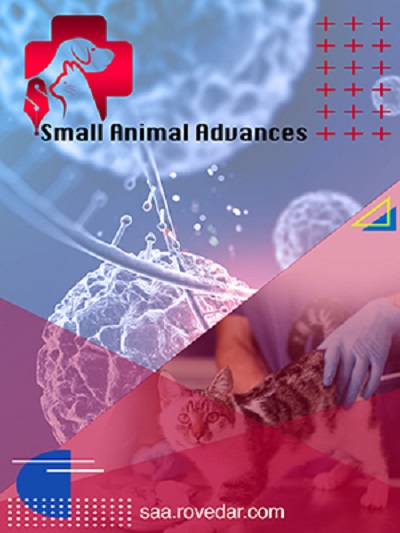Acral Lick Dermatitis (Lick Granuloma) in an Adult Male Labrador Retriever Dog
Main Article Content
Abstract
Introduction: Acral lick dermatitis is a skin injury commonly noticed in dogs with obsessive licking behavior. The lesions are usually noticed on the distal extremities which become raised, thickened, and plaque-like.
Case report: A five-year-old male Labrador retriever dog was presented to the Small Animal Medicine Unit of Veterinary Clinical Complex (VCC), Rajiv Gandhi Institute of Veterinary Education and Research (RIVER), Puducherry, India, with a history of a superficial wound on the metatarsal region of the right hind limb with bleeding and continuous licking since a month. Clinical examination of the lesion showed a nodular eczematous lesion of 2 cm thickness, while other vital parameters were normal. Based on the licking behavior and other investigations, the skin lesions were diagnosed as acral lick dermatitis. Treatment included the application of Ointment Triamcinolone acetonide (topically) for a month. The licking was controlled using E-collar, and the dog was engaged in playful activities to overcome boredom. The lesion regressed completely within a month and hence was treated uneventfully.
Conclusion: Diagnosis and identifying the root cause of the skin disorder can determine the course of treatment. Topical application of corticosteroids (triamcinolone acetonide) and methods, such as E-collar, to control the licking behavior, helped the animal’s recovery.
Article Details

This work is licensed under a Creative Commons Attribution 4.0 International License.
References
Jasmin P. Clinical handbook on canine dermatology. 3rd ed. France: Virbac Animal Health; c2012.
Beale K. Canine acral lick dermatitis. United States: NAVC Clinician’s brief; c 2012. p. 81-84.
Kim J, Kim Y, Kim S, Kim HJ, Lee JH, and Kim HJ. A case of acral lick dermatitis in a dog with multiple lesions. J Vet Clin. 2021; 38(4): 194-198. DOI: https://doi.org/10.17555/jvc.2021.38.4.194
Grant D. Acral lick dermatitis. Imp Vet Pract. 2016. Available at: https://www.veterinary-practice.com/article/acral-lick-dermatitis
Rapoport JL, Ryland DH, and Kriete M. Drug treatment of canine acral lick. An animal model of obsessive-compulsive disorder. Arch Gen Psychiatry. 1992; 49(7): 517-521. DOI: https://doi.org/10.1001/archpsyc.1992. 01820070011002
Seltzer J. Acral lick granuloma: Stopping the itch- lick cycle. 2019
Aug [cited on 20th December 2022]. Available at https://www.dvm360.com/view/acral-lick-granuloma-stopping-itch-lick-cycle
Clark M. Triamcinolone acetonide for dogs. Dogtime.com. 2020[cited on 20th December]. Available at: https://dogtime.com/dog-health/54901-triamcinolone-acetonide-dogs-uses-dosage-side-effects

